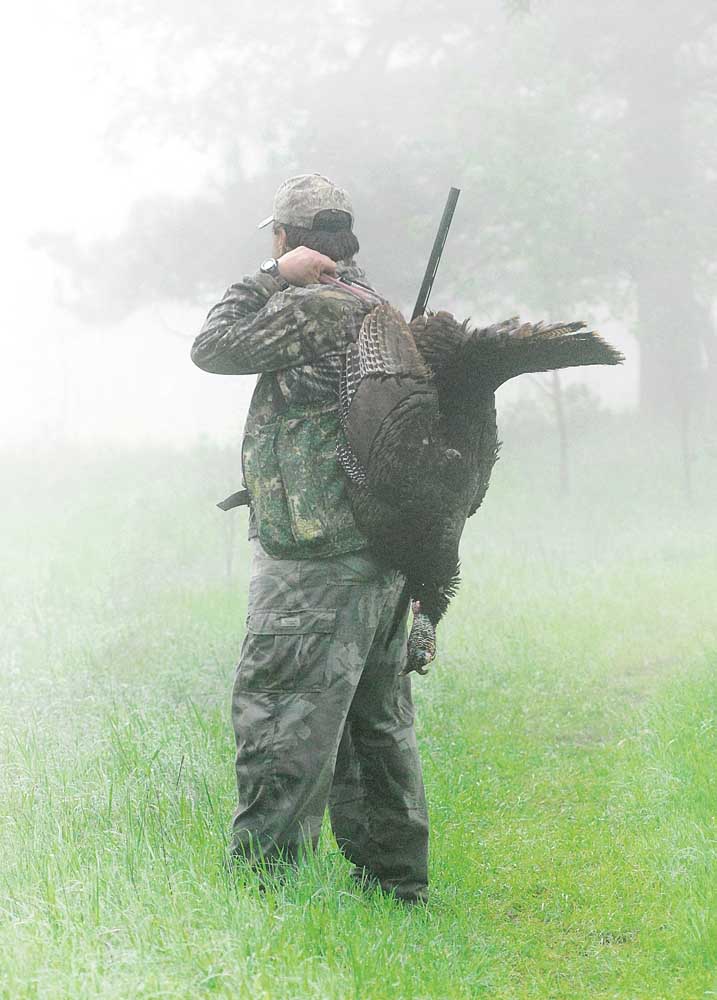Hit And Miss: East Texas Turkey Restoration slow to take flight
Published 8:22 pm Friday, February 23, 2024

- Calling in a wild turkey in the spring is a trophy hunt anywhere in Texas, but especially so in East Texas where numbers are low.
Having hunted both Rio Grande and Eastern wild turkeys, I can say that calling one in is one of the biggest thrills there is in Texas hunting. But there is something especially exciting about taking a bird in East Texas.
I think it is a couple of things. First, there aren’t many of them despite the fact the Texas Parks and Wildlife Department has stocked more than 8,000 of the birds since the 1980s to restore a once-thriving population that disappeared in the early 1900s because ofhabitat loss and market hunting.
Also, while there are similarities when it comes to hunting the birds the difference in the terrain makes it a world apart. In Rio Grande range a gobbler can be heard hundreds of yards away and watched coming for a long distance. In forested East Texas the hunter may never see the birds until they are right on top of you.
And there is something different about the gobble from a mature tom in the Eastern range. It sounds more like thunder rumbling through the canopy, causing a shock to the system of a hunter lucky enough to hear it.
But there is a problem. Even with more than four decades of stockings the number of wild turkeys in East Texas remains small in comparison to the state’s Rio Grande population. Because of that a spring-only season is open in just 12 counties — Bowie, Cass, Fannin, Grayson, Jasper, Lamar, Marion, Nacogdoches, Newton, Polk, Red River and Sabine. The total average harvest over the last five years has been just 173 birds, with 193 in 2020 being the high-water mark.
In the early years of the program just 15 birds, five males and 10 females, were stocked in a location. While the stockings were successful and populations grew in the best habitat, they were unsuccessful in most locations because there just were not enough mature toms released to make up for natural or predator mortality.
A decade ago the department changed stocking strategies and began releasing 75 birds per site, with 25 being males of various ages. Stocking sites are also within proximity of others so populations can expand and intersperse.
The super stocking program seems to be working to a degree even though there are not any areas with booming populations yet.
“Some areas are better than others. All release sites since 2014 still have birds and we’ve observed nest success and recruitment at all sites. It is still in question if we will have birds at these sites in 10-20 years,” explained Jason Hardin, TPWD’s turkey program leader.
He added there are several issues at every site that determines whether the population expands or not. Of course, overall habitat is the most critical, and the department is trying to put money into making improvements where it can.
“TPWD is working with partners to put habitat dollars on the ground at and near release sites. East Texas changes rapidly and without continued management, habitat is quickly lost. Brood habitat is limited across East Texas, and permanent openings consisting of native grasses and weeds, plus plenty of bare ground are very limiting. But each site is unique,” Hardin said.
But there is also an issue of landowner interest. Hardin said in some areas landowners stay involved after stockings are completed while others do not.
The program is also at a crossroad about future releases. The program is dependent on receiving birds from other states to continue. While TPWD has the money for the birds through the Upland Gamebird Stamp on hunting licenses, it is having trouble contracting birds from other states that have seen their own bird populations decline in recent years.
So far this winter the department has not received any birds, but is working with Rhode Island and South Dakota to possibly obtain some before the end of the winter trapping season.
“We are planning to wrap up our restocking on the Sulphur River in Hopkins County. We need about 40 birds to wrap that site up. From there, we will move to White Oak Creek in Hopkins County,” Hardin said.
At this point, however, the department has stopped evaluating new sites until it can obtain enough birds to conclude the White Oak Creek stockings.
Although there have been ongoing discussions to expand the East Texas spring season, Hardin said that nothing has been determined yet.
“There is no movement there, but we are developing decision variables on how and when to open. It will need to be limited and well timed,” he said.






